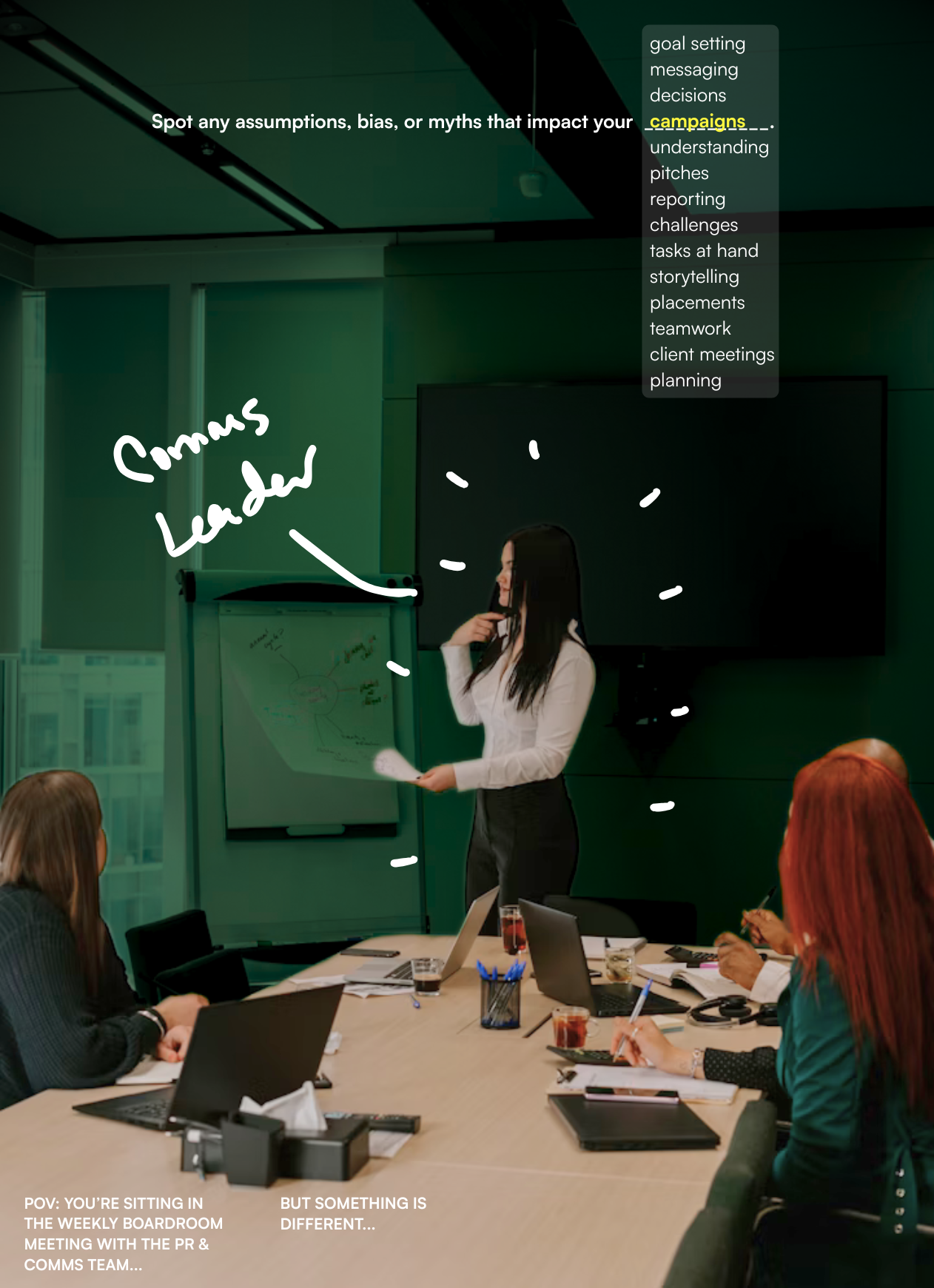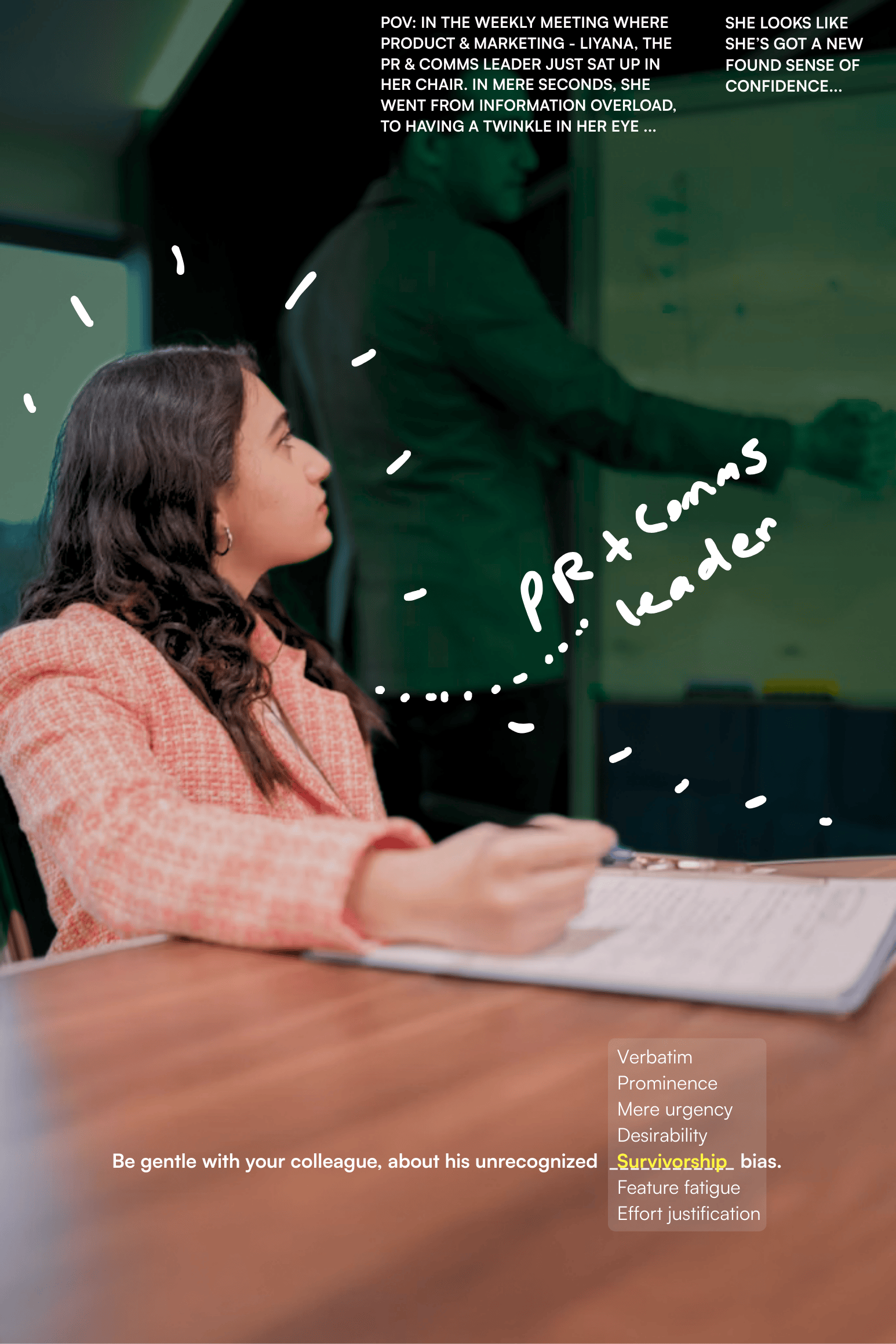
Events and Workshops for global PR & Comms leaders


You know that moment when legal wants three approvals, the journalist needs a quote in 20 minutes, and the CEO is asking why this is even a story?
When you draft twelve versions of the same announcement because everyone has an opinion, but no one takes responsibility for the decision. When you are managing a crisis while half your information is speculation, the other half is three hours old, and leadership is asking if AI can handle this faster.
Your communication decisions happen faster than you realize. Which stakeholder concern gets priority. How you frame the opening line. When timing feels right for an announcement.
These micro-choices run on mental shortcuts that worked before. Yet, when context shifts, those shortcuts can produce outcomes you did not expect
Communications work means every decision is a reputational bet. You’re weighed down by shifting strategies, AI hype cycles, crowded vendor choices, shrinking trust, and uncertainty inside and outside your organization.
We focus where it matters most— on the actual enemies: assumptions, bias, myths, misconceptions, and decision risks. We use behavioral science to help teams think more clearly, especially when it counts. The methods are simple but rigorous: surface what’s really being decided, test the stories running in the background, and train your reasoning muscle for the moments when pressure is highest.
We don’t care what platforms or tools you use, how fancy your reporting is, or which media channels you’re publishing on. What matters here: your people, your context, your next move. There are no lectures, no negativity, and no pretending. Just the work of thinking together, sharpening judgment, and building resilience you can use again and again.
We start with one real challenge your team is facing. Your situation, your constraints. We examine the assumptions driving choices, test them against current reality, and build ways of thinking that adapt as quickly as your stakeholder landscape changes - with effectiveness top of mind.
Previous workshop participants mentioned these were their favorite takeaways:
• 🔭 Two questions that helped them spot stakeholder shifts before any surprises
• 🧠 One bias check their team ran in five minutes, while setting goals & objectives
• 🧩 A decision frame they worked out - for when legal, operations, & leadership disagreed
Focusing on the challenge at hand, but looking at it through a fresh lens can be inspirational. Especially for leaders who have to manage PR & Comms related responsibilities, even though it may not be the only thing on their job description. One recent participant who was inspired by the new way to think about their work, and after our session she created progress indicators for relationship health with her stakeholders - making growth visible and valuable to everyone involved. We don't tell you how to do your job. You bring your context, and we apply behavioral science to help you surface assumptions, strengthen judgment, and solve real challenges as a team. Co-creating a learning experience that you can be proud of. We hope you will be able to show your leadership that the decisions you're making on: campaigns, strategy, or whatever is on the agenda - were made using principles from best practices in behavioural science.
Previous workshop participants mentioned these were their favorite takeaways:
• 🔭 Two questions that helped them spot stakeholder shifts before any surprises
• 🧠 One bias check their team ran in five minutes, while setting goals & objectives
• 🧩 A decision frame they worked out - for when legal, operations, & leadership disagreed
Focusing on the challenge at hand, but looking at it through a fresh lens can be inspirational. Especially for leaders who have to manage PR & Comms related responsibilities, even though it may not be the only thing on their job description. One recent participant who was inspired by the new way to think about their work, and after our session she created progress indicators for relationship health with her stakeholders - making growth visible and valuable to everyone involved.

Good questions reduce false certainty. They slow the jump from pattern to cause. They make room for time lags, outside forces, and mixed signals across teams - leading to:
• Fewer reworks and reversals
• Clearer handoffs across functions
• More trust in the plan
Authority bias ▫ Confirmation bias ▫ Availability heuristic ▫ Groupthink ▫ Anchoring ▫ Recency effect ▫ Survivorship bias ▫ Framing effects ▫ Loss aversion ▫ Social proof

Part of our ethos is being epic. So we're going to reverse engineer the Top 5 desired impact we strive to have on your life as a communications leader.
**Please reach out to us after the session so we can high-five you when you experience any of the following changes:
• Fewer emergency calls because better questions prevented them
• More confidence in stakeholder meetings because assumptions were tested
• Better sleep during crisis periods because response patterns hold up
• Communication strategies that survive contact with reality, and thrive
• Promotions, recognition, confidence & trust both recieved and created
• Elevating the profile of PR & Comms within your organization
Part of our ethos is being epic. So we're going to reverse engineer the Top 5 desired impact we strive to have on your life as a communications leader.
**Please reach out to us after the session so we can high-five you when you experience any of the following changes:
• Better sleep during crisis periods because response patterns hold up
• Communication strategies that survive contact with reality, and thrive
• Promotions, recognition, confidence & trust both recieved and created
• Elevating the profile of PR & Comms within your organization




01
Time Pressure


02
Information Gaps


03
Competing Priorities
04
Context Shifts




04
Context Shifts
05
Reputation Stakes












































When did your team last discover a stakeholder priority had shifted without announcement?
Most shifts emerge over months. Teams who ask simple, regular questions spot them sooner and spend less on reactive work.
How much of your recent crisis response relied on patterns older than six months?
Pressure revives old playbooks. A short pause to test assumptions improves first moves.
If last year's biggest success ran today, would it work the same way?
Success creates blind spots. Stress-test past wins against today’s context before you scale them.


It's an increasingly uncertain, and unpredictable world we live in. Effective communication often comes down to understanding how people think, and behave. Each free, downloadable asset in this series pairs a behavioral concept with a visual metaphor, and practical guidance to help PR & Comms make smarter, faster decisions under pressure.
Whether you are managing a crisis, building relationships through uncertainty, or helping leadership communicate change, we can help you think more clearly under pressure. Share your priorities. We will respond with an approach tailored to your team and situation.